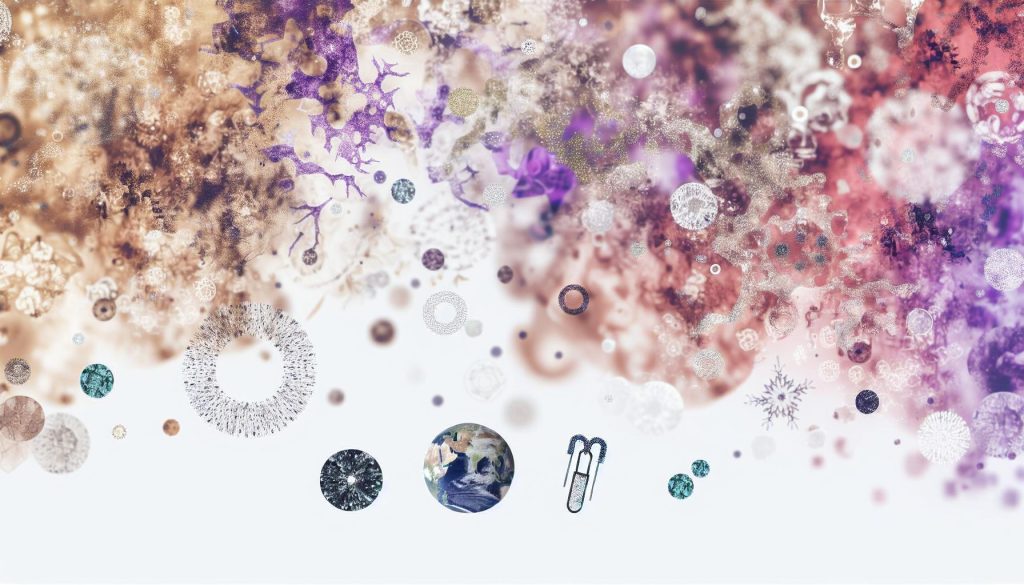After giving birth, many new moms wonder when it’s safe to return to using tampons. Understanding the timing and health implications is crucial for recovery and reducing infection risks. While some might feel ready after a couple of months, it’s meaningful to follow medical advice to ensure safe postpartum care. Using the right products can aid in a smoother transition during this significant life change.
Understanding Your Body’s Changes After Childbirth
Adapting to Postpartum changes
The postpartum phase is a significant time of adjustment for new mothers, as their bodies undergo a myriad of changes after childbirth.While you’re likely focused on caring for your newborn,it’s important to understand how your body is healing and adapting after delivery. From hormonal shifts to physical recovery, acknowledging these changes can facilitate a smoother transition into motherhood.
One of the most noticeable alterations is the cessation of lochia, the vaginal discharge that follows childbirth. This discharge, composed of blood, mucus, and uterine tissue, can last for several weeks. It’s vital to monitor its color and volume, as any dramatic changes may necessitate medical advice.Typically, lochia can last anywhere from four to six weeks, but some women might find they stop experiencing it shortly after, while others may continue to see light spotting up to two months post-delivery. During this time, many wonder, “Can I wear a tampon 2 months after giving birth?”—the answer hinges on your unique recovery process and the advice of your healthcare provider.
Physical Discomfort and Recovery
After giving birth, physical discomfort is common, particularly in the perineal area. Women may face challenges such as swelling, bruising, or even tearing that require careful management. It’s essential to keep the area clean and dry; many find that using cold compresses or sitz baths can provide relief. If you experience significant pain or notice signs of infection—like fever or unusual discharge—consulting a healthcare professional is crucial to ensure proper healing.
- Monitor recovery signs: Track symptoms like bleeding, pain, and any changes in discharge.
- Practice hygiene: A clean environment and gentle care can assist in healing.
- Engage in gentle movements: Light activities can promote blood flow and healing without overexertion.
Furthermore, hormonal fluctuations during this time can lead to emotional changes, sometimes termed the “baby blues.” New mothers might experience mood swings, anxiety, or feelings of being overwhelmed. These feelings can be exacerbated by physical discomfort, fatigue, or lack of sleep. It’s beneficial to reach out for support from family or friends and discuss any ongoing emotional challenges with a healthcare provider.
Understanding and addressing these postpartum changes not only aid recovery but also empower you as you embark on the journey of motherhood. Be patient with yourself—these transformative months are crucial for both your well-being and your new baby.
The Safety of Using Tampons Postpartum
After giving birth, the body goes through a remarkable recovery process, but it’s crucial to approach menstrual hygiene with care. Many new mothers wonder, “Can I wear a tampon 2 months after giving birth?” While two months might seem like sufficient time, the answer isn’t straightforward due to the risks associated with using tampons too soon.In the immediate postpartum period, women experience lochia, which is the vaginal discharge that consists of blood, mucus, and uterine tissue. During this time, using tampons can introduce bacteria into the vagina, significantly increasing the risk of infection, particularly to the healing tissues inside. Health experts generally recommend waiting until the lochia has completely ceased and your body has had adequate time to heal. Most sources suggest waiting at least six weeks to two months,depending on your individual recovery,before considering the use of tampons again to ensure optimal safety and hygiene [[1]](https://www.healthline.com/health/what-not-to-do-after-giving-birth) [[3]](https://www.bodyform.co.uk/break-taboos/discover/sex-and-relationships/tampons-and-periods-after-birth/).
- Wait for Lochia to Stop: Before using tampons again, ensure that all lochia has ceased.
- Consult Your healthcare Provider: Every woman’s recovery varies; get personalized advice based on your healing process.
- Opt for Alternatives: Until you receive the all-clear, consider using maternity pads for comfort and safety.
Be attentive to your body’s signals. If you notice unusual symptoms like increased pain, a foul odor, or excessive bleeding, consult with your doctor promptly. Keeping track of your body’s recovery will not only help you make informed decisions about menstrual products but also aid in ensuring your health during this significant phase of motherhood. Adopting a cautious approach now can pave the way for a safer postpartum journey, allowing you to ease back into your regular routine with confidence in your choices.
when is the Right Time to Reintroduce Tampons?
Understanding When to Reintroduce Tampons
After giving birth, your body undergoes significant changes, and it’s vital to prioritize healing before reintroducing any menstrual products. The vaginal and uterine tissues are particularly sensitive post-delivery, and using tampons too early can increase your risk for infections, such as endometritis. For most women, it’s advised to wait until the lochia, or postpartum bleeding, has fully ceased, which typically occurs around six weeks after childbirth. Consulting with your healthcare provider during your postpartum check-up can provide personalized advice regarding when it’s safe for you to start using tampons again [[3]].
Safety Guidelines for Reintroducing Tampons
When considering if you can wear a tampon two months after giving birth, keep the following health guidelines in mind:
- Consult Your Healthcare Provider: Always discuss with your doctor during your postpartum check-up.
- Watch for Symptoms: If you notice increased vaginal discharge,foul odors,or discomfort,contact your healthcare provider.
- Consider Menstrual Cups: Some women find menstrual cups more comfortable and easier to manage during the postpartum recovery period.
Factors Influencing the Timing
The timing for reintroducing tampons may vary based on individual factors, including your recovery progress, the mode of delivery (e.g., vaginal vs. cesarean), and any complications that may have arisen during childbirth. In some cases, healthcare providers may recommend waiting even longer than six weeks, especially if there were tears or stitches that need additional time to heal [[2]].
By adhering to these recommendations and being attentive to your body’s signals, you can safely reintroduce tampons into your routine while ensuring your postpartum health remains a top priority.
Comparing Tampons and Pads in the Early Weeks
Understanding the Choice Between Tampons and Pads in the Early Weeks
After giving birth, the body undergoes significant changes, including the way it manages menstrual flow. Many women find themselves asking, “Can I wear a tampon 2 months after giving birth?” While each woman’s recovery is unique, it’s essential to understand the differences between tampons and pads during those early weeks postpartum.
One of the primary considerations is comfort. Pads are generally recommended initially, as they are less invasive and allow the healing process of the vagina and uterus to progress without additional irritation. They offer a straightforward way to manage postpartum bleeding, and there is a smaller risk of infection compared to using tampons. Tampons,while convenient and discreet,can pose a risk if used too soon after childbirth—particularly if there are any remaining stitches or if the body is still in a sensitive healing phase.
Factors to Consider When Choosing
When postpartum, consider the following factors:
- Comfort: Many new mothers prefer pads for their simplicity and comfort during recovery.
- Hygiene: Pads can be less likely to cause irritation or infection, particularly in the sensitive post-birth stages.
- Flow Management: Postpartum bleeding,or lochia,can vary significantly. Some may find pads more effective for managing heavier flows in the initial weeks.
- personal Preference: Ultimately, the choice may come down to what feels more comfortable and convenient for the individual.
a cautious approach is best. many healthcare providers recommend waiting at least six weeks before using tampons again to allow for proper healing. this timeframe may vary, so it’s always an excellent idea to consult with a healthcare professional if there are any uncertainties about when to safely transition back to using tampons.
Expert Tips for choosing the Right Tampon
Understanding Your Options
After giving birth, many women wonder about the transition back to using tampons and which ones might be best suited for their needs. It’s essential to prioritize comfort and safety when making this choice. Understanding your body’s changes during the postpartum period can definitely help you select the right product that not only offers convenience but also ensures health and hygiene.
- Consider Absorbency: Postpartum bleeding can vary greatly, so it’s crucial to choose a tampon that matches your flow. You may find that you start with higher absorbency and gradually transition to regular or light as your body heals.
- opt for Organic or Natural Materials: Many women prefer tampons made from organic cotton to minimize exposure to chemicals and fragrances. These options can be gentler, especially on sensitive skin.
- Check for Applicator Types: Some find that applicator tampons are easier to use than non-applicator ones.However, if you’re looking for a more environmentally pleasant choice, there are also applicator-free options that reduce waste.
Prioritize Comfort and Usage
When choosing tampons post-birth, comfort should be a primary concern. Some women might experience increased sensitivity,and a softer tampon can alleviate discomfort during insertion or removal. If you’re unsure which type to try, consider starting with the lowest absorbency level to see how your body responds.
Another critical factor is to ensure that you’re following the recommended safety measures from healthcare providers, particularly concerning the postpartum recovery timeline. As cited, experts recommend waiting at least six weeks after delivery before using tampons again to reduce the risk of infection [[1](https://www.babycenter.com/baby/postpartum-health/i-just-had-a-baby-when-can-i-start-using-tampons-again_11729)].
consulting with Healthcare Providers
Before making a switch back to tampons, it’s wise to consult your healthcare provider for personalized advice. They can guide you on how your body is healing and when it’s safest to start using tampons again. Keeping an open dialog about what products work best for you can help avoid potential complications or discomfort.
Choosing the right tampon after childbirth is about more than just convenience—it’s about listening to your body, prioritizing your comfort, and ensuring you’re being safe and hygienic during your recovery.
Signs to Watch For: Is Your Body Ready?
Understanding Your body’s Readiness After Birth
It’s crucial to listen to your body as you navigate the postpartum period. Many new mothers wonder, *can I wear a tampon 2 months after giving birth?* While the answer may vary based on individual recovery, there are specific signs you should monitor to determine if your body is ready to resume using tampons safely.
Signs Your Body is Healing well: After childbirth, it’s essential to assess both physical and emotional recovery. Consider the following indicators that suggest you’re healing properly:
- Minimal Discomfort: If you’re not experiencing pain in your pelvic area and there’s no significant vaginal swelling or discomfort, your body might potentially be ready.
- No Unusual Discharge: A clear or white discharge with no foul odor indicates a healthy healing process.
- Healing of the Vaginal Area: Ensure there are no signs of irritation or infection around any stitches from tearing or episiotomies.
- Stability in Your Menstrual Cycle: If your menstrual cycle has returned to its regular rhythm post-delivery, this can signal that your body is regaining its balance.
Warning Signs to Be Aware Of
While many new mothers may feel ready to switch back to tampons, it’s essential to be vigilant for signs that indicate you should hold off. Look out for these symptoms:
- Fever: A temperature higher than 100.4°F could signify an infection that needs medical attention.
- Persistent Pain: If you experience abdominal or pelvic pain that worsens rather than improves, consult your healthcare provider.
- Abnormal Odor or Color in Discharge: Any foul smell or significant change in discharge, especially if it appears green or brown, can indicate infection.
| Sign | Action |
|---|---|
| Fever over 100.4°F | Contact a healthcare provider. |
| Persistent or worsening pain | Seek medical advice immediately. |
| Foul-smelling discharge | Schedule a medical evaluation. |
By keeping an eye on these signs, you can make informed decisions about your postpartum body and enjoy a smoother recovery. If you feel uncertain, always consult your healthcare provider before making changes to your menstrual hygiene routine, including using tampons after giving birth.
Hormonal Changes and Their Impact on Menstrual Products
The postpartum period is a whirlwind of hormonal fluctuations that can significantly impact your menstrual cycle and the types of menstrual products you may consider using. Understanding these changes is vital, especially if you’re contemplating the question, “Can I Wear a Tampon 2 Months after Giving Birth?” as your body adjusts during this time.
Understanding Hormonal Changes
Following childbirth,the body undergoes ample hormonal shifts,primarily driven by changes in estrogen and progesterone levels. These hormones play crucial roles in regulating the menstrual cycle.Initially, postpartum levels of progesterone drop sharply, which can affect the timing and nature of your first period after giving birth.For many women, this return to menstruation can occur anywhere from 6 weeks to several months postpartum, depending on factors such as breastfeeding and individual health.
Impact on Menstrual Products
As your body transitions back to a regular menstrual cycle, it’s important to choose menstrual products that align with your needs. The type of sanitary products you may have used prior to giving birth might not be suitable as your body recovers and adjusts. Here are some considerations:
- Absorbency: postpartum bleeding (lochia) can last several weeks and vary in intensity. Initially, heavier pads or maternity products may be more suitable.
- Comfort: Hormonal changes can make you more sensitive; therefore, products that are soft and hypoallergenic could help minimize discomfort.
- Usage of Tampons: While some health professionals advise waiting until your body completely recovers before using tampons, others suggest that if you feel ready and comfortable, you may start using them two months after birth, provided you follow proper hygiene protocols.
Key Takeaways for New Mothers
When contemplating whether to use tampons after childbirth, remember:
- Consult with your healthcare provider for personalized advice.
- Monitor your body’s signals and comfort level with different products.
- Be aware of any changes in your menstrual cycle, as irregularities are common during the initial months postpartum.
as you navigate the postpartum stage and reflect on safety tips regarding menstrual product usage, embracing this transformative period with knowledge and preparedness can make a significant difference in your comfort and health.
Listening to Your Body: Comfort and Safety First
Understanding your body’s cues is essential, especially after giving birth. Your postpartum experience can vary significantly,making it crucial to pay attention to how you feel physically and emotionally. Returning to tampon use,particularly two months post-delivery,raises important questions about comfort and health. It’s always wise to consider your body’s unique recovery timeline before making any decisions.
When contemplating whether to wear a tampon after childbirth, consider the following factors:
- Vaginal Healing: Postpartum healing can take time. If you experience any discomfort, unusual discharge, or symptoms of infection, it might be best to wait longer before using tampons.
- Menstrual Changes: Your menstrual cycle can be irregular after giving birth.Listen to your body—notice any changes in flow, duration, or symptoms.
- Consult a Healthcare Professional: If in doubt, discussing your situation with a healthcare provider ensures you receive tailored advice based on your health history and recovery.
Comfort and safety should always be your top priorities. if you choose to use tampons, ensure that they are made from organic materials to reduce exposure to potential harmful substances often found in conventional products. additionally, manufacturers usually recommend not wearing tampons overnight or for extended periods, as this can elevate the risk of Toxic Shock Syndrome (TSS) [[2]].
Ultimately, prioritizing your comfort and being in tune with your body will guide you in making the right choices about tampon use two months after giving birth. Emphasizing safety and informed decision-making will help ensure a smoother transition back to routine menstrual products.
Frequently Asked questions
Can I Wear a Tampon 2 Months After Giving Birth? Safety Tips?
Yes, you can wear a tampon two months postpartum, provided you are healed and feeling comfortable. Generally, it’s advised to wait at least six weeks before using tampons to minimize the risk of infection.
By eight weeks,most women find that they can safely use tampons without discomfort,but it’s essential to listen to your body. If you experience any pain or unusual symptoms, consult with your healthcare provider for personalized advice. For more details on postpartum health, consider reviewing reliable resources.
How do I know if I am ready to use tampons after childbirth?
You are likely ready to use tampons if you have stopped bleeding and feel no discomfort. Most practitioners suggest waiting six weeks after childbirth to ensure healing.
checking for signs of healing, such as the absence of pain during insertion and using products that feel comfortable, are good indicators. Always consult your doctor if you have any concerns regarding your recovery.
What are the risks of using tampons too soon postpartum?
Using tampons too soon after birth can increase the risk of infection, particularly if the vaginal area hasn’t fully healed. This is primarily due to the potential for bacteria entering the uterus.
To avoid complications, it is vital to watch for signs of infection, like unusual discharge or foul odor. If you have any concerns, seek advice from your healthcare provider for personalized safety tips.
Can I wear tampons during my first period after giving birth?
Yes, wearing tampons during your first postpartum period is generally safe if you’re cleared by your doctor. Many women find they can return to using tampons when they feel comfortable.
However, light bleeding or sensitivity may occur, so it’s good to start with low absorbency options. Pay attention to your body and adjust accordingly, and don’t hesitate to reach out to your healthcare provider for guidance if needed.
What should I do if I feel discomfort while using tampons postpartum?
If you experience discomfort while using tampons postpartum, it’s best to stop using them immediately.Discomfort may indicate that your body isn’t fully healed or that you’re using the wrong absorbency.
Transitioning to more comfortable alternatives, like pads or menstrual cups, may be helpful during this time. Consulting with a healthcare professional can provide you with specific advice and recommendations suited to your situation.
Are menstrual cups a safe option to tampons after giving birth?
Yes, menstrual cups can be a safe alternative to tampons postpartum, provided you feel comfortable using them. Many women switch to cups for better comfort and capacity.
as with tampons, it’s crucial to ensure your body is ready for a menstrual cup, typically after six weeks. If you’re unsure, consult your doctor for personalized recommendations.
When should I consult my doctor about menstrual products postpartum?
You should consult your doctor if you notice any abnormal symptoms when using menstrual products, such as unusual pain, heavy bleeding, or signs of infection.
additionally, if you have concerns about your menstrual cycle returning to normal, or about choosing the best menstrual products, your healthcare provider can offer valuable advice and reassurance.
Concluding Remarks
while it may seem convenient to use tampons two months postpartum, it’s essential to prioritize your health and recovery journey. Most experts recommend waiting at least six weeks after childbirth before using tampons to minimize the risk of infection and ensure your body is healing properly. As you navigate this new chapter, remember that your comfort and well-being come first. Don’t hesitate to discuss any concerns with your healthcare provider, as their guidance can help you make informed decisions that suit your individual needs. For more insights and support on postpartum care, feel free to explore our other articles—your journey matters, and you’re not alone in this experience!






